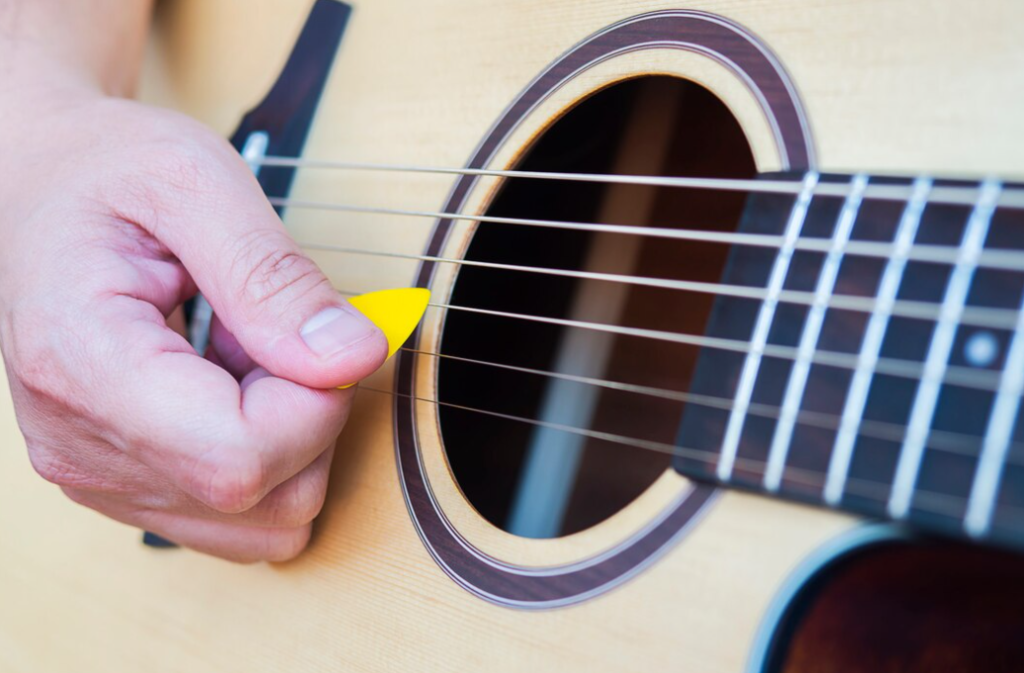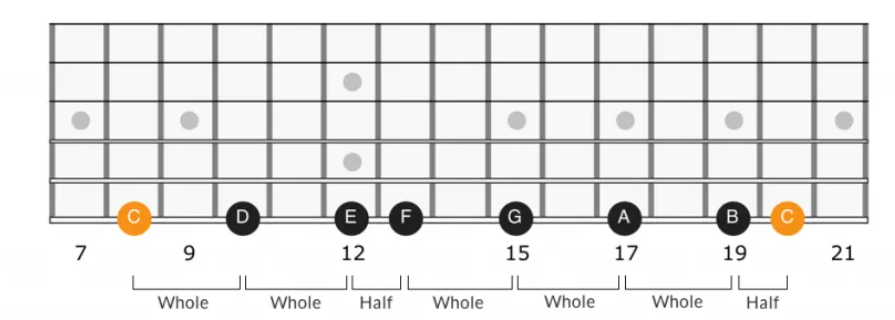Easy Steps To Learn To Play The C Major Scale

In this session, we’ll explore the widely acclaimed C major guitar scale. This particular scale is incredibly prevalent and serves as the foundational key for numerous songs. Known for its cheerful tone, it’s often among the initial scales that guitarists acquaint themselves with. Without further ado, let’s delve into it and examine its components.
Which Notes Compone C Major Scale
The C major scale consists of seven sequential notes within the diatonic scale. These notes are as follows:
C – D – E – F – G – A – B
This major scale is unique because it exclusively uses natural notes, meaning there are no sharps or flats involved. This characteristic simplifies its memorization process.
Every scale is built upon a set of intervals defined by its scale formula. In the case of C major, the scale formula consists of the following intervals:

- From C to D is 2 frets (Whole step)
- From D to E is 2 frets (Whole step)
- From E to F is 1 fret (Half step)
- From F to G is 2 frets (Whole step)
- From G to A is 2 frets (Whole step)
- From A to B is 2 frets (Whole step)
- From B to C is 1 fret (Half step)
Now it’s time to put all of this together and learn the scale positions on the fretboard.
C Major Scale Guitar Positions
Position 1

The initial position for the C major scale begins with the root note positioned at the 8th fret of the 6th string. Within this position, you’ll encounter three instances of the root note, located on the 6th string, 4th string, and 1st string.
Position 2

In the second position, the C major scale commences with the root note positioned at the 10th fret of the 4th string. Within this position, there are two occurrences of the root note, with the second instance appearing at the 13th fret of the 2nd string.
Position 3

Position three of the C major scale also encompasses two root notes. The first root note, serving as the initial point for this position, is situated at the 15th fret of the 5th string. The second root note is located on the 13th fret of the 2nd string.
Position 4

Within the 4th position, there are two root notes: the lower one located at the 15th fret of the 5th string, and the second one positioned at the 17th fret of the 3rd string. This position extends across six frets, necessitating some shifting and stretching to play it fully.
Position 5

Position 5 stands out as the sole other position featuring three root notes. The foundational root note lies on the 20th fret of the 6th string, while the remaining two root notes are situated on the 17th fret of the 3rd string and the 20th fret of the 1st string.
Interested in taking your guitar skills to the next level? Click the below and book a free lesson with us! We’re committed to helping you express yourself freely on the guitar without endless scales and theory. Happy playing!
Author: Daniel Powers Jr, the founder of Real Brave™, serves as the chief inspiration to thousands of students in the Real Brave music instruction program. He’s also the visionary behind PracticePad™, an online platform for live one-on-one online music lessons, lesson tracking, and scheduling. Beyond his entrepreneurial pursuits, Daniel leads a non-profit organization that provides formerly homeless children with access to music education, making a profound impact on their lives. His unwavering dedication to music, innovation, and education continues to inspire individuals to reach their fullest potential while creating positive change in communities. Follow Real Brave on all the socials:
youtube.com/@realbraveinc
twitter.com/realbraveinc
https://www.tiktok.com/@realbraveinc
instagram.com/realbraveaudio
facebook.com/realbraveinc






